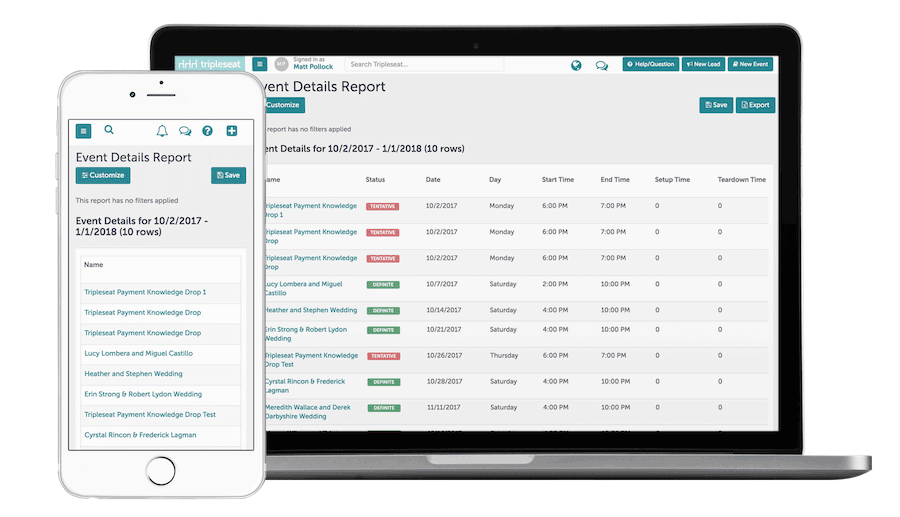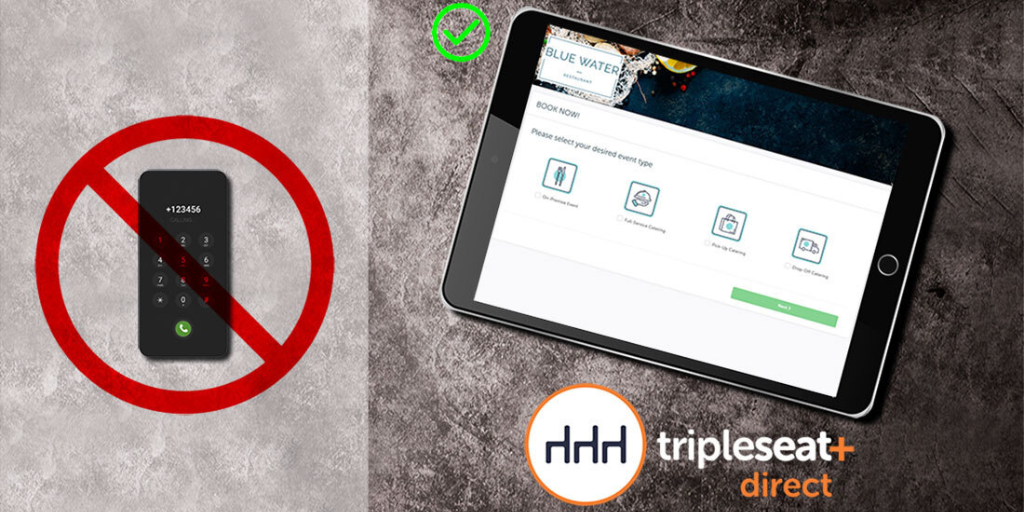Restaurant Technology: Top 2025 Trends and Tools

In the bustling restaurant industry, it’s no longer just about how great your food is. As a restaurant manager, you need to stay on top of rapidly evolving restaurant technology trends to streamline your operations and increase sales and revenue. Do you have modern solutions in place to optimize your restaurant’s performance? Are you planning this coming new year and strategizing with restaurant technology?
What is the Meaning of Restaurant Technology?
Restaurant technology refers to various technological solutions and tools that are used in the restaurant industry. This can include both on-premise and off-premise software applications, various equipment both FoH and BoH, and digital platforms. Ultimately, restaurant tech is all designed to enhance the efficiency and management of restaurant operations.
Whether you’re a small café owner or you are managing a chain of luxury dining spots, awareness of the latest tech tools and trends is crucial. Let’s explore the 2025 restaurant technology trends setting the stage for success in the restaurant industry.
Why is Restaurant Technology Beneficial?
Technology really has revolutionized the restaurant industry, streamlining operations and enhancing the dining experience in so many ways.
Competitive Advantage
Restaurants that embrace technology position themselves ahead of competitors in today’s digital-first world. Modern ordering and payment options meet growing customer expectations for convenience, while robust backend systems enable faster service and better quality control. This technological edge often translates to higher ratings on review platforms and increased market share in competitive areas.
Operational Efficiency
Restaurant management systems dramatically streamline daily operations by automating inventory tracking, staff scheduling, and order processing. This automation typically reduces manual workload by 30% and cuts administrative time in half, allowing managers to focus on customer service and business growth rather than paperwork.
Financial Performance
Digital solutions directly impact the bottom line through better cost control and revenue optimization. Restaurants often see food costs decrease through precise inventory management, while dynamic pricing and menu optimization can boost average check sizes . Additionally, integrated payment systems reduce accounting errors and speed up end-of-day reconciliation.
Customer Experience
Modern restaurant technology enhances the dining experience in measurable ways. Digital ordering reduces wait times, while personalized loyalty programs typically increase customer return rates. Mobile payment options and digital receipts also boost customer satisfaction scores by providing convenience and faster service.
Data-Driven Insights
Advanced analytics tools provide restaurant owners with actionable intelligence about their business. By tracking customer preferences, peak hours, and sales patterns, restaurants can make informed decisions about staffing, inventory, and menu offerings. This data-driven approach typically leads to an improvement in forecasting accuracy and better resource allocation.
Staff Satisfaction
Technology simplifies many aspects of restaurant work, from order taking to kitchen coordination. Digital systems can reduce order errors by up to 30% and streamline communication between front and back of house. This efficiency leads to less workplace stress and typically results in a reduction in staff turnover, saving significant hiring and training costs.
Marketing Effectiveness
Digital tools enable sophisticated marketing strategies through customer data collection and analysis. Restaurants using CRM systems and targeted marketing typically see an increase in promotional response rates and can better track the ROI of their marketing investments. Personalized offers based on dining history can increase average order values.
Tech Trends for the Restaurant Industry
1. Automated Digital Menus and Self-Service Kiosks
Automated digital menus and self-service technology are set to take center stage in restaurants by 2025, offering customers greater convenience and personalization while streamlining operations for businesses. These advanced systems will feature interactive touchscreens, QR-code-based menus, and integrations with mobile apps, enabling diners to browse menu options, customize orders, and complete payments independently. Enhanced by AI, digital menus will provide tailored recommendations based on customer preferences and past orders, creating a more personalized experience. Meanwhile, self-service kiosks will continue to reduce wait times, minimize order errors, and lower labor costs, allowing staff to focus on delivering exceptional service. As these technologies become standard, they will redefine how restaurants operate, blending efficiency with innovation to meet evolving customer expectations.
2. Augmented Reality (AR) and Virtual Reality (VR)
AR and VR will play a significant role in enhancing the dining experience and restaurant operations. Restaurants will use AR to offer interactive menus, allowing customers to visualize dishes in 3D before making a selection, or even see ingredients and preparation techniques through their smartphones or AR glasses. This technology can also be used to create immersive, branded experiences, such as virtual tours of vineyards or farms where ingredients are sourced. VR, on the other hand, will offer unique dining experiences, such as themed virtual dining rooms or remote events where guests can enjoy a meal while participating in virtual activities, making meals feel more like an experience than just eating. These technologies will also assist in training staff by simulating real-world scenarios, from kitchen operations to customer service interactions, providing a safer, more effective way to hone skills. As these innovations evolve, AR and VR will enable restaurants to deliver personalized, memorable experiences, blending the digital and physical worlds in new and exciting ways.
3. Robot-Assisted Kitchens
In 2025, robot-assisted kitchens are set to revolutionize restaurant operations, blending cutting-edge automation with culinary precision. These advanced systems will handle repetitive tasks like chopping, stirring, and frying, ensuring consistency, speed, and safety in food preparation. Robots equipped with AI and machine learning will adapt to various recipes, maintain portion control, and even manage complex cooking processes. This technology will free up chefs to focus on creativity and plating, enhancing the overall dining experience. Additionally, robot-assisted kitchens can help address labor shortages and reduce food waste by optimizing ingredient usage. As these innovations become more accessible, they promise to reshape kitchen operations, boosting efficiency and enabling restaurants to meet the demands of a fast-paced industry.
4. AI-Power
Voice technology and AI are revolutionizing the restaurant industry, redefining how businesses engage with customers and optimize operations. Devices like Amazon Alexa and Google Assistant enable hands-free ordering, reservations, and inquiries, creating seamless, intuitive interactions. Self-ordering kiosks from companies like Lightspeed, Zivelo, and Elo go a step further by gathering customer data, minimizing errors, and freeing up staff to focus on delivering exceptional service. Meanwhile, AI continues to drive innovation across the industry. AI-powered chatbots and virtual assistants manage reservations, answer inquiries, and recommend menu items based on dietary preferences, offering highly personalized experiences. In the kitchen, AI optimizes inventory by predicting demand, reducing food waste, and streamlining menu planning. On the marketing front, AI delivers hyper-targeted campaigns and leverages predictive analytics to anticipate peak times and refine staffing. Together, these technologies enable restaurants to operate smarter, faster, and more efficiently while elevating the dining experience to new heights. We expect AI will help restaurants continue to face staffing challenges and become more efficient.
5. Hyper-personalized Experiences
Customers want more than just food & bev from restaurants. They are seeking now more than ever, hyper-personalized experiences. Tech-powered customization will continue to redefine the dining experience as restaurants leverage advanced tools to create hyper-personalized interactions tailored to each guest. AI-driven systems will analyze customer preferences, dietary restrictions, and past orders to offer tailored menu recommendations and personalized promotions. Dynamic digital menus will adapt in real-time, showcasing options based on time of day, seasonality, or individual tastes. Platforms like Tripleseat play a pivotal role by enabling restaurants to collect and manage detailed customer data, helping them personalize private events, tailor seating arrangements via Tripleseat Floorplans, and customize menus for specific occasions. With Tripleseat’s robust CRM capabilities, restaurants can build deeper connections with guests, ensuring every interaction feels unique and memorable. This fusion of technology and personalization not only elevates the customer experience but also boosts loyalty and repeat business.
6. Smart Restaurant Management and IoT
With IoT (Internet of Things) devices and advanced food service technology, restaurants can closely monitor their inventory levels, understand ingredient shelf life, and predict order quantities. This technology minimizes waste, reduces costs, and ensures fresh ingredients for customers.
Inventory management software can be a real game-changer. These tools can automatically keep track of things like ingredient and liquor amounts, ensuring you never have to 86 (read: run out of) a menu item and potentially disappoint a customer. Systems like Upserve even let users automatically re-up on needed items, and make ordering a breeze with features like alerts and one-click purchasing.

7. Event and Private Dining Management Reimagined: Tripleseat
Tripleseat stands out as a game-changer for restaurants that offer event services, private dining, and catering. This game-changing software simplifies the process of booking and executing events. With features like integrated document management, streamlined communication, and detailed reporting, Tripleseat ensures that event management is a breeze. Whether you’re managing a wedding, corporate luncheon, or birthday party, this tool is a must-have for any restaurant looking to streamline its event operations.
8. Eco-friendly Technology
Eco-friendly tech integrations are reshaping the restaurant industry by enabling businesses to prioritize sustainability without compromising efficiency. Smart appliances and energy-efficient equipment, such as programmable ovens and LED lighting, reduce energy consumption while maintaining performance. Waste-tracking technology helps restaurants monitor and minimize food waste, offering actionable insights to refine inventory management and portioning. Digital menus and contactless payment systems reduce the need for paper receipts and printed materials, aligning with eco-conscious practices. Additionally, sustainable packaging solutions for delivery and takeout, combined with carbon footprint tracking apps, allow restaurants to showcase their environmental commitment to customers. There are also waste and recycling tech options. Brands such as Rubicon have engineered solutions that allow restaurants to send fewer leftovers to landfills, save money, and keep their spaces sparkling clean. These innovations not only support the planet but also appeal to the growing demand for sustainable dining experiences.
9. Online Ordering Platforms
Technology is transforming the restaurant industry, delivering greater convenience and efficiency for both customers and operators. According to Forbes, 92% of all top-performing restaurants now offer mobile ordering, highlighting the growing demand for digital solutions. Self service Online ordering platforms, such as TripleseatDirect, have become indispensable tools for expanding a restaurant’s reach. With user-friendly interfaces, real-time tracking, and integrated payment capabilities, these platforms streamline the ordering process and enhance the overall customer experience. Platforms like TripleseatDirect not only simplify online bookings and orders but also help restaurants manage order flow, reduce wait times, and alleviate kitchen congestion during peak hours. Additionally, they provide valuable data insights, enabling operators to refine menu offerings and improve operational efficiency, ensuring they stay competitive in a fast-evolving industry.
10. Hiring and Scheduling Tech
It’s no surprise that being understaffed can pose serious problems for your restaurant operations. It can result in subpar service, slower kitchens, and details falling through the cracks. Avoid those mishaps with hiring software that pinpoints the best employees for your business. Platforms like Poached Jobs help you vet candidates, get your open listings in front of the right people, and more.
Scheduling technology will advance and help restaurants overcome staffing issues and unexpected turnover. Scheduling software — like 7shifts, Restaurant365, and When I Work — can eliminate a lot of these pain points. Not only do these tools save you time, but they can track and reduce labor costs, and make it easier to communicate with your other locations.
11. Contactless and Mobile Payment Solutions
This year, restaurants will embrace the latest advancements in contactless and mobile payment solutions, providing customers with faster, more secure, and convenient ways to settle their bills. Contactless payment methods, including tap-to-pay cards, mobile wallets, and biometric payments, will dominate, ensuring smooth transactions and reducing wait times. Mobile payment solutions will integrate seamlessly with restaurant apps, allowing customers to split checks, tip, and complete payments directly from their smartphones. Platforms like Tripleseat PartyPay will revolutionize group dining experiences by simplifying the process of splitting bills among multiple guests, offering transparency and convenience for both customers and staff. These innovations will not only enhance customer satisfaction but also streamline operations by reducing errors and increasing efficiency at the point of sale. By adopting these cutting-edge payment solutions, restaurants will meet evolving consumer expectations while staying ahead in a competitive market.
12. Advancement in POS Systems for 2025
Most restaurants run on their point-of-sale (or POS) system. Advancements in POS systems in 2025 are poised to transform the way restaurants and hospitality businesses manage operations and engage with customers. The next generation of POS systems will integrate seamlessly with inventory management, customer loyalty programs, and online ordering platforms, offering a unified solution for streamlined workflows. AI-powered analytics will enable real-time insights into sales trends, customer preferences, and staff performance, empowering businesses to make data-driven decisions. Enhanced cloud capabilities will provide greater mobility, allowing operators to access and manage their systems remotely. Additionally, advanced payment options, including contactless and biometric payments, will offer customers a faster, more secure checkout experience. These innovations will make POS systems an indispensable tool for driving efficiency, enhancing customer satisfaction, and staying competitive in the fast-evolving restaurant industry.
13. Reservation and Booking Systems
Online reservations are some of the most longstanding types of restaurant technology. Sites like OpenTable and Resy see tons of traffic from people in search of restaurant reservations for dining. These online marketplaces make it easy for restaurants to fill empty seats at any time. It’s lightyears ahead in efficiency over showing up and hoping there’s no wait for a table or following the old-school process of manually dialing up every spot in the local phone book.

Looking for a Large Party Reservation solution?
TripleseatDirect is a frictionless direct event booking platform for on-premise private events, off-premise catering, and large party reservations. Built on the Tripleseat platform, TripleseatDirect enables venues to book more catering, private events, and large party reservations faster.
14. Food and Beverage Cost Solutions
Keeping tabs on your food and beverage volume is crucial to maintaining a healthy bottom line. Food cost management platforms like Orderly make the process easy through automated invoices and inventory counts while connecting with your suppliers and your POS system to boot. In a similar vein, BevSpot allows users to manage inventory, view sales data, and track orders while on the go.
15. Wearable Tech
The most nascent of these trends, wearable tech is almost sure to make a big splash in the industry in the near future. There’s already buzz around devices, like Presto’s, that restaurant team members wear to alert them that a table needs something or that they’d like to speak to a manager. Faster response means an overall better dining experience, and that can lead to more business.
Looking to stay ahead in 2025? Update your Restaurant Technology with Tripleseat
Staying updated with technology trends isn’t just a nice-to-have for restaurants—it’s essential! To remain competitive and offer an unmatched dining experience, leveraging the right tech tools, like Tripleseat, is the way forward. The future of the restaurant industry is here, and it’s tech-infused! Are you ready? Schedule time to find out how Tripleseat can streamline your operations and propel your restaurant into the future.
